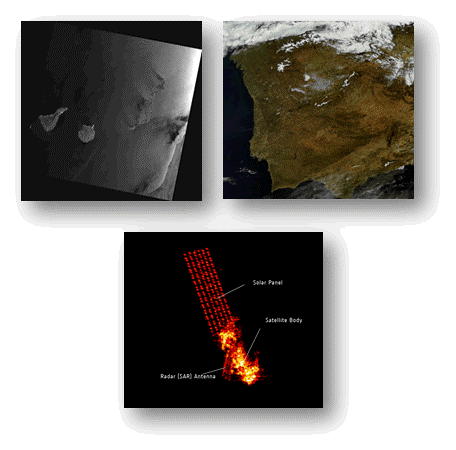Reliability is one of the key contributors in the achievement of CleanSpace’s space sustainability objectives.
Reliability lies at the heart of successful satellite Post Mission Disposal (PMD) assuming satellites have been designed for PMD. This is because a large share of primary causes for unsuccessful PMD may be directly related to reliability issues such as equipment failures.

Last images from an Earth observation satellite that operated beyond its nominal mission lifetime, Apr 2012 Credit: ESA
Radar image of the Earth observation satellite in orbit by the ground based tracking and imaging radar (TIRA) Credit Fraunhofer FHRFHR
But what makes a satellite reliable?
It is widely recognized that reliability is built upon three basic pillars:
- robust design (i.e. resilient to failures),
- high quality parts procurement selection and,
- a thorough assembly, integration and test campaign.
High reliability has been traditionally associated with high cost but new game changing manufacturing methods may revolutionise these preconceptions. Ultimately, reliability is demonstrated in the field through successful in-orbit flight operations.
Time is another key factor (negatively) affecting reliability. The older a product is, the more likely it is to fail. Once a satellite operates beyond its nominal lifetime it may experience what we call wear-out. That is, its reliability will decrease even more rapidly than during its useful life since its failure rate is no longer constant but increasing with time.
Spacecraft that survive their nominal mission lifetime are generally proposed for a mission extension to maximise their return on investment. Until now the remaining lifetime estimates to support mission extension decisions were predominantly made based on consumables (e.g. remaining propellant) with limited consideration of reliability. This will change in the future. In addition, space debris mitigation regulations (SDM) will soon impose successful PMD requirements to be met during operations (e.g. 85% reliability at end of proposed extension period). As a result, accurate quantitative reliability-based lifetime assessments will be needed to demonstrate compliance.
The methods used at present to predict satellite reliability are based on outdated handbooks and conservative stress assumptions that have been proven to be largely inaccurate with respect to the demonstrated in-orbit reliability. In response, ESA and its industrial partners are engaged in several technology development activities to devise improved prediction methodologies to account for technology evolution while making more extensive use of in-orbit experience. All this is taking place with the goal of better supporting both design and operational project phases.
Reliability will soon take a more significant role in the satellite operations phase, and in particular in the mission extension review process, contributing to better risk-informed decision-making about satellite life extension and the extension of space sustainability through compliance to SDM regulations.





Discussion: no comments